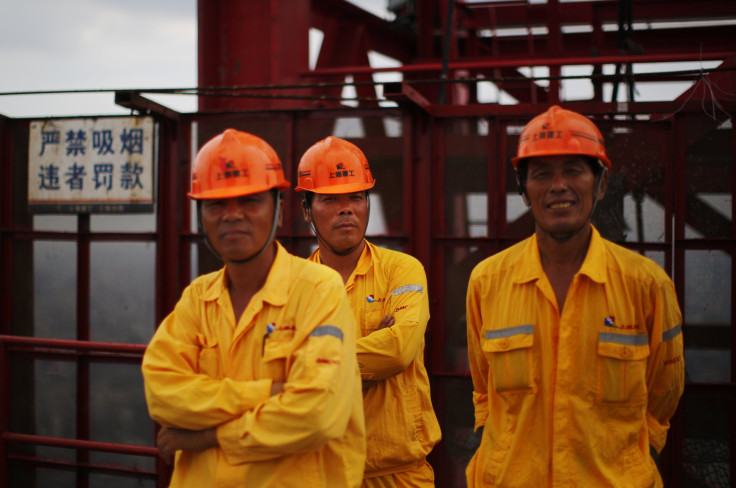China’s Flash Manufacturing PMI For August Rises To 4-Month High; Reform Effect Seen

China’s manufacturing sector expanded to a four-month high in August, after contracting for three straight months, HSBC's Purchasing Managers’ Index, or PMI, released on Thursday showed, reinforcing hopes that recent moves by Beijing have begun to show positive results.
The preliminary reading of the survey for August stood at 50.1 -- helped by a rise in new orders -- compared to 48.1 expected by analysts. The headline figure was recorded at 47.7 in July. A reading above 50 indicates expansion while a reading below 50 shows contraction.
“China’s manufacturing growth has started to stabilize on the back of modest improvements of new business and output. This is mainly driven by the initial filtering through of recent fine-tuning measures and companies’ restocking activities, despite the continuous external weakness,” said Qu Hongbin, HSBC’s chief economist for China, in a statement.
“We expect further filtering through, which is likely to deliver some upside surprises to China’s growth in the coming months,” Qu said.
The flash manufacturing output index also was positive, rising to a three-month high of 50.6, up from 48.0 in July. New export orders, on the other hand, fell at a faster rate and employment dropped, though at a slower rate, while output and supply prices both increased, the statement said.
The surprise uptick in the index, which is weighted toward small- and mid-sized companies, indicates that the recent reform measures announced by the Chinese government to prop up the slowing economy have begun to yield results, albeit at a modest rate.
"It confirms that the economy has stabilised in the short term and downside risks for H2 have declined," Zhiwei Zhang, China economist at Nomura, told Reuters.
Beijing, last month, announced measures to boost investment in infrastructure-related sectors and offered tax cuts for small- and mid-sized industries to boost domestic demand and the country's economic growth, which slowed to a two-decade low in the last quarter.
The measures were part of a broader reform agenda to guide the Chinese economy to a domestic consumption-oriented model from a credit-fueled, export-oriented growth, which the country had experienced in the last few years.
However, analysts expect the rebound in manufacturing activity to remain slow and the overall rate of growth to stay at 7.4 percent in the third quarter and at 7.5 percent for the full year 2013, in line with official estimates.
“Nonetheless we believe a strong H2 recovery to above 8 percent is unlikely, as rising interest rates will pressure investment. We still expect growth to slow to 6.9 percent in 2014," Zhang said, according to Reuters.
HSBC’s final PMI for China’s manufacturing sector is due on Sept. 2, and an official survey by the Chinese government is expected to be released on Sept. 1. The official PMI, derived mostly from bigger firms and state-run companies that are involved in housing and infrastructure-related projects, typically posts a higher reading than the HSBC PMI.
On Thursday afternoon, following the release of the flash PMI, the Shanghai Composite index was trading down 0.13 percent while Hong Kong’s Hang Seng Index traded down 0.69 percent.
© Copyright IBTimes 2025. All rights reserved.






















